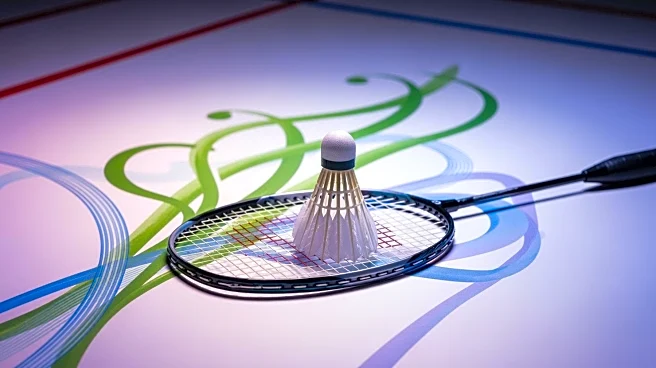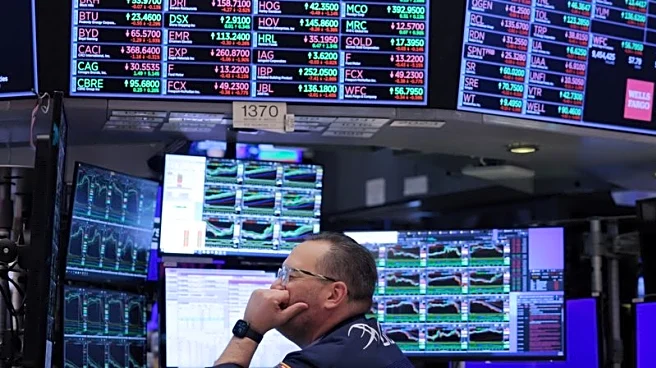What's Happening?
Badminton is experiencing a resurgence in popularity, particularly among Gen Z and Millennials, according to a Pinterest trend report. Searches for badminton-related items such as rackets, outfits, bags, and shoes have seen significant increases. The
sport, which involves hitting a shuttlecock across a net, is gaining traction not only for its gameplay but also for its associated lifestyle. The badminton and tennis market is projected to grow at a compound annual growth rate of 5.85% through 2031, reaching a market size of $18.9 billion. This growth is reminiscent of the rise of pickleball, another racket sport that has become widely popular in recent years.
Why It's Important?
The growing interest in badminton among younger generations could have significant implications for the sports industry and related markets. As more people engage with the sport, there could be increased demand for equipment, apparel, and facilities, potentially driving economic growth in these sectors. Additionally, the sport's accessibility and health benefits make it appealing to a broad audience, which could lead to increased participation and community engagement. The rise of badminton also highlights the role of social media in popularizing sports, as platforms like TikTok help spread awareness and attract new players.
What's Next?
With the 2028 Olympic Games scheduled to take place in Los Angeles, there is an opportunity to further promote badminton in the United States. Efforts to expand the sport's reach include educational resources and development programs supported by the Badminton World Federation. These initiatives aim to increase participation and ensure that players are taught by professionals, which could lead to a more robust badminton community. As the sport continues to gain traction, it may become more integrated into American culture, similar to its status in Asia and Europe.
Beyond the Headlines
The resurgence of badminton could lead to cultural shifts in how sports are perceived and played in the United States. Historically, badminton has been seen as a casual backyard activity, but its growing popularity may change this perception, positioning it as a competitive and respected sport. Additionally, the sport's emphasis on accessibility and health benefits aligns with broader societal trends towards wellness and active lifestyles, potentially influencing public health initiatives and community programs.















